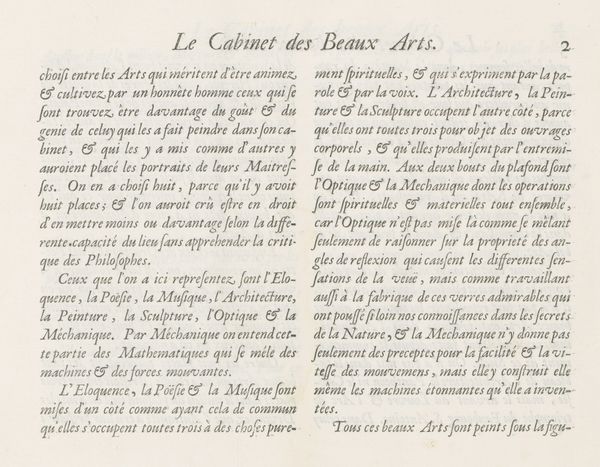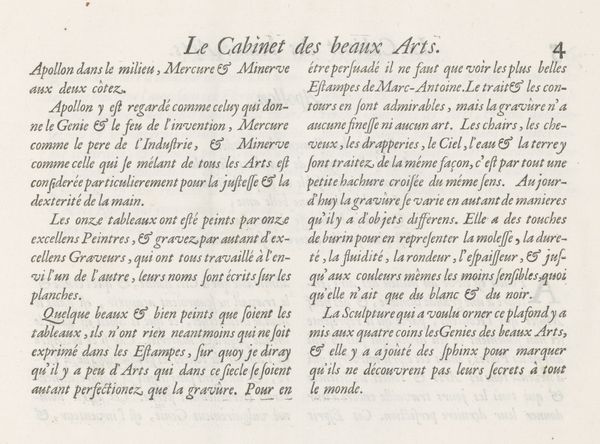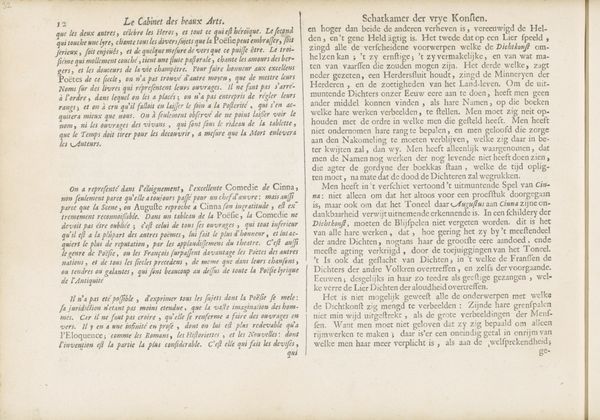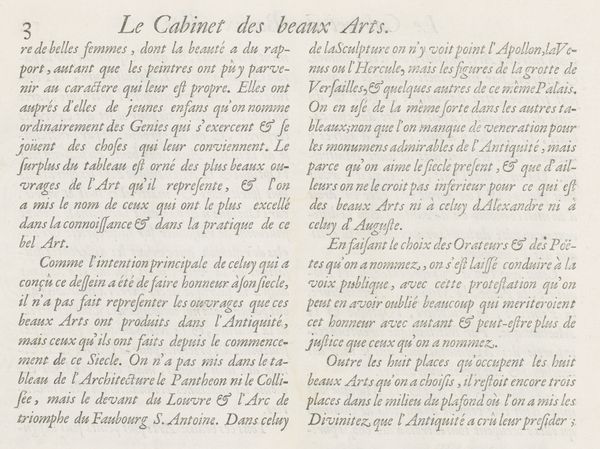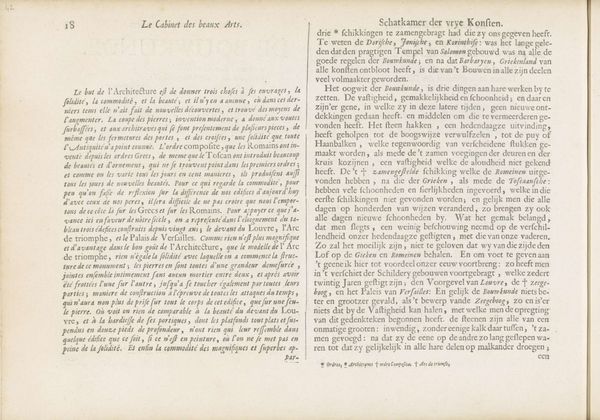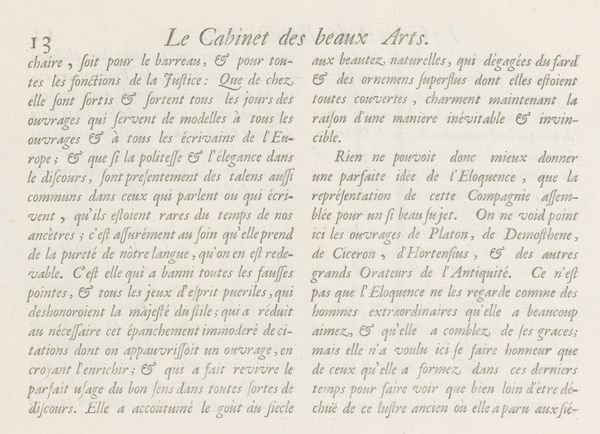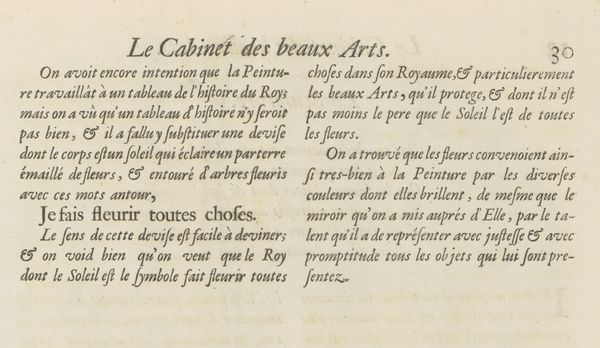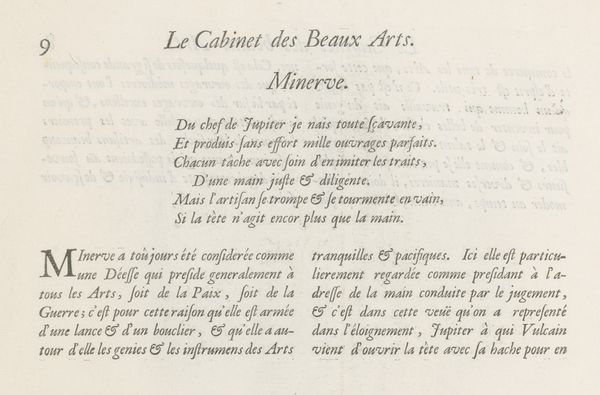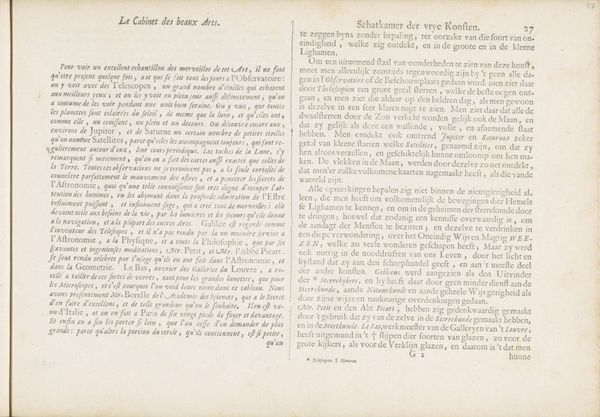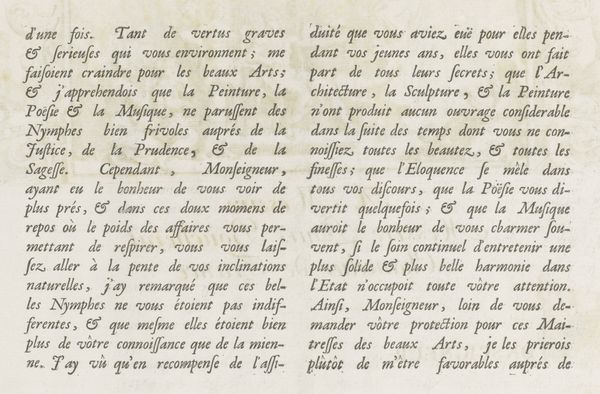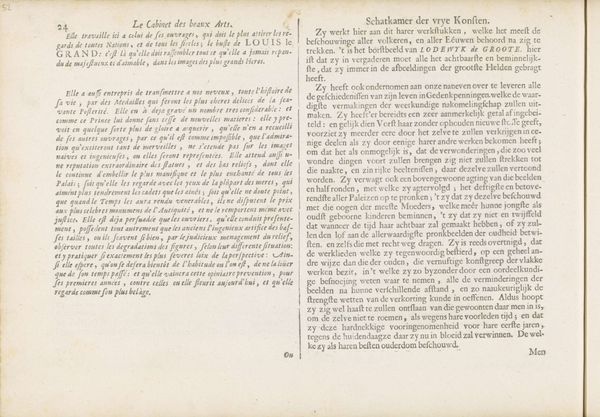
graphic-art, print, typography
#
graphic-art
#
hand-lettering
#
baroque
# print
#
editorial typography
#
hand drawn type
#
hand lettering
#
paragraph style
#
typography
#
stylized text
#
thick font
#
handwritten font
#
classical type
#
small lettering
Dimensions: height 281 mm, width 380 mm
Copyright: Rijks Museum: Open Domain
Editor: Here we have "Tekstblad met verklaring van de prent over Welsprekendheid, p. 12," a 1695 print by Charles Perrault. The text is so stylized. What jumps out to you about it? Curator: As a historian, I'm immediately drawn to the institutional context surrounding this text. We're looking at a piece tied to the French Academy, dedicated to eloquence, and intimately linked to the monarchy. Consider the politics of language at the time. Who was deemed worthy of speaking eloquently, and what role did this cultivated "eloquence" play in maintaining social hierarchies? Editor: So, eloquence wasn't just about speaking well, it was a marker of status? Curator: Precisely. And think about the very act of printing and disseminating this text. It represents an effort to codify and control who has access to knowledge about rhetoric, likely reinforcing existing power structures within French society. Do you notice any visual cues that might support that claim? Editor: Well, the use of very deliberate, stylized font, seems like an appeal to classical and baroque traditions, reflecting status... almost a branding for eloquence? Curator: Exactly! It is fascinating how printing and language could serve specific social functions, reinforcing cultural norms or even challenging them. Understanding these things lets us analyze not only what art is representing, but why. What's your take after hearing all this? Editor: I'll never look at old prints the same way! I now recognize their broader cultural role as documents of institutional power at a given time, shaping tastes and reinforcing social distinctions. Thanks!
Comments
No comments
Be the first to comment and join the conversation on the ultimate creative platform.

